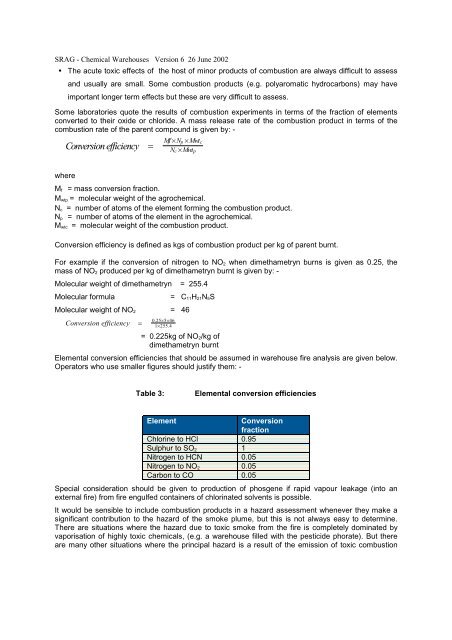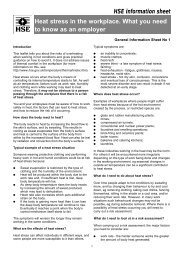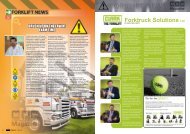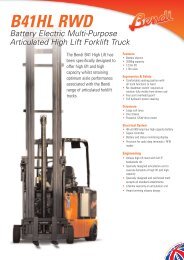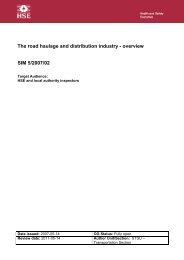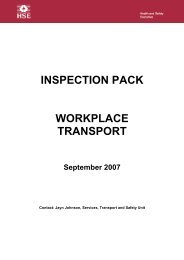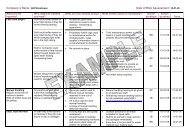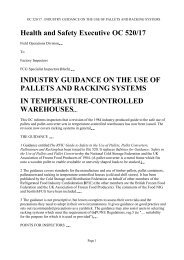Hazards - Forktruck Solutions Ltd.
Hazards - Forktruck Solutions Ltd.
Hazards - Forktruck Solutions Ltd.
You also want an ePaper? Increase the reach of your titles
YUMPU automatically turns print PDFs into web optimized ePapers that Google loves.
SRAG - Chemical Warehouses Version 6 26 June 2002The acute toxic effects of the host of minor products of combustion are always difficult to assessand usually are small. Some combustion products (e.g. polyaromatic hydrocarbons) may haveimportant longer term effects but these are very difficult to assess.Some laboratories quote the results of combustion experiments in terms of the fraction of elementsconverted to their oxide or chloride. A mass release rate of the combustion product in terms of thecombustion rate of the parent compound is given by: -Conversion efficiency Mf N p Mwt cN c Mwt pwhereM f = mass conversion fraction.M wtp = molecular weight of the agrochemical.N c = number of atoms of the element forming the combustion product.N p = number of atoms of the element in the agrochemical.M wtc = molecular weight of the combustion product.Conversion efficiency is defined as kgs of combustion product per kg of parent burnt.For example if the conversion of nitrogen to NO 2 when dimethametryn burns is given as 0.25, themass of NO 2 produced per kg of dimethametryn burnt is given by: -Molecular weight of dimethametryn = 255.4Molecular formula = C 11H 21N 5SMolecular weight of NO 2 = 46Conversion efficiency0.255461255.4= 0.225kg of NO 2/kg ofdimethametryn burntElemental conversion efficiencies that should be assumed in warehouse fire analysis are given below.Operators who use smaller figures should justify them: -Table 3: Elemental conversion efficienciesElementConversionfractionChlorine to HCl0.95Sulphur to SO 2 1Nitrogen to HCN0.05Nitrogen to NO 2 0.05Carbon to CO0.05Special consideration should be given to production of phosgene if rapid vapour leakage (into anexternal fire) from fire engulfed containers of chlorinated solvents is possible.It would be sensible to include combustion products in a hazard assessment whenever they make asignificant contribution to the hazard of the smoke plume, but this is not always easy to determine.There are situations where the hazard due to toxic smoke from the fire is completely dominated byvaporisation of highly toxic chemicals, (e.g. a warehouse filled with the pesticide phorate). But thereare many other situations where the principal hazard is a result of the emission of toxic combustion


